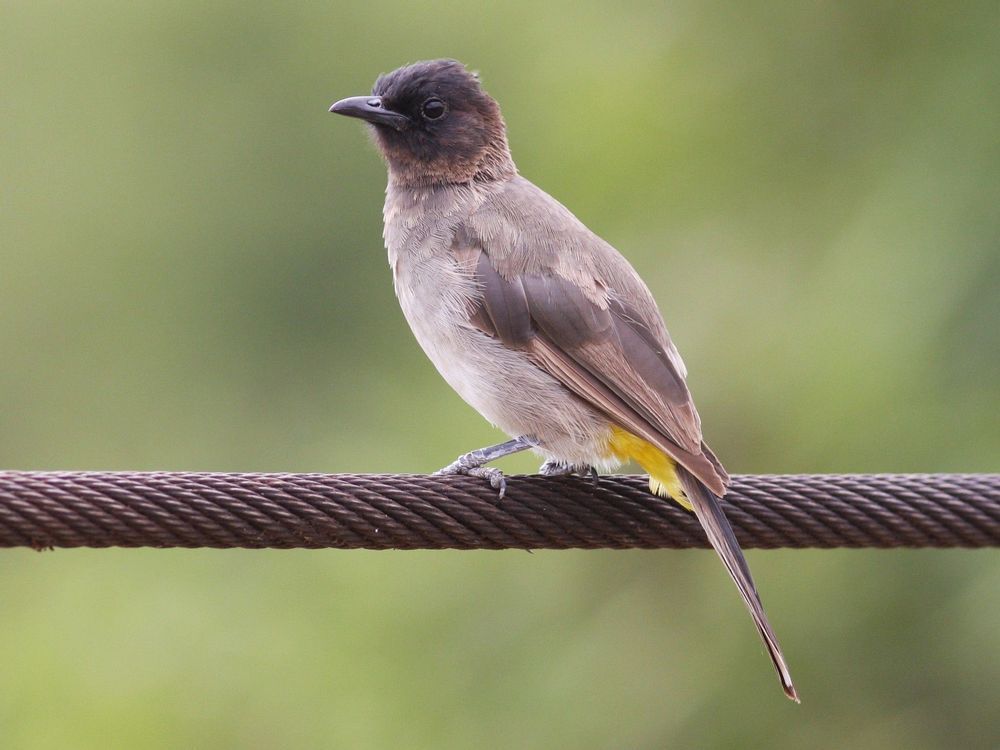Common bulbul
Pycnonotus barbatus
ORDER
Passeriformes
FAMILY
Pycnonotidae
GENIUS
Pycnonotus
2690
Observations
1900
Photos
26
Recordings
06
Videos

Description
The bill is fairly short and thin, with a slightly downcurving upper mandible. The bill, legs, and feet are black and the eye is dark brown with a dark eye-ring, which is not readily visible. It is about 18 cm in length, with a long tail. It has a dark brown head and upperparts. Sexes are similar in plumage.
Distribution
Western Africa: Mauritania, Senegal, The Gambia, Guinea-Bissau, Mali, Sierra Leone, Liberia, Ivory Coast, Burkina Faso, Ghana, Togo, Benin, Nigeria, Niger, Chad, Cameroon, Central African Republic, Equatorial Guinea, Gabon, Congo, Democratic Republic of Congo, Angola
Habitat
It is a common resident breeder in much of Africa, and it has recently been found breeding in southern Spain at Tarifa.[2] It is found in woodland, coastal bush, forest edges, riverine bush, montane scrub, and in mixed farming habitats. It is also found in exotic thickets, gardens, and parks.
Feeding
Bulbuls eat a wide range of foods, ranging from fruit to seeds, nectar, small insects and other arthropods and even small vertebrates. The majority of species are frugivorous and supplement their diet with some insects, although there is a significant minority of specialists, particularly in Africa.
Breeding
Breeding times vary with location, but are generally March to September in North African locations, e.g. March-August in Egypt. In the central and southern countries of Africa, the range is July to April, e.g. August-March in Botswana. The birds are monogamous, solitary nesters. The cup nest (7.5-12 cm in diameter and 5-6 cm deep) is built by the female, from small twigs, rootlets and dry grass and lined with animal hair and plant fibres. It is built on twigs or a branch 1-5 m above the ground, often close to human activity, but screened by vegetation. 2-5 eggs are laid, 1 a day, and incubation begins on completion of the clutch. Male feeds female on the nest during incubation, which is 12-15 days. The young are fed by both parents, fledging in 13-16 days. They can barely fly so they keep together on a branch where the parents continue to feed them, until they can fend for themselves. Brood parasitism by Jacobin Cuckoo is frequent, with occasional activity from 3 or 4 other species of cuckoo.
Threats
The primary threat to the Endangered (two species) and Vulnerable (five species) bulbuls is habitat loss, though hybridization and trapping for the caged bird trade are also problematic. The effect of destruction of habitat is especially pronounced because so many of these birds have quite restricted ranges.
References
BirdLife International (2021) Species factsheet: Pycnonotus barbatus. Downloaded from http://www.birdlife.org on 21/01/2021. Recommended citation for factsheets for more than one species: BirdLife International (2021) IUCN Red List for birds. Downloaded from http://www.birdlife.org on 21/01/2021.